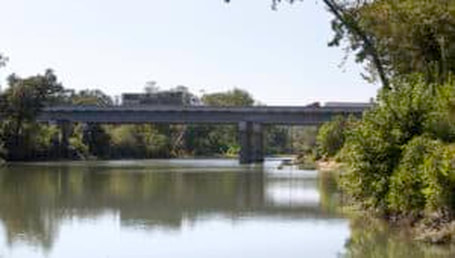First of several meetings on 10-year plan set for Siloam Springs on TuesdayBy KELLY BOSTIAN
For the CCOF With phosphorous pollution levels plateaued at a rate that continues to exceed standards set for the Illinois River, stakeholders are set to meet Tuesday to discuss plans for the next 10 years. The Oklahoma Conservation Commission, in partnership with the Arkansas Department of Agriculture’s Natural Resource Division, set the first in what will be a series of public meetings to update the Illinois River Watershed Management Plan in Siloam Springs, Arkansas, 3 p.m. to 5 p.m. at the First Baptist Church, 2000 Dawn Hill Rd. “The two states’ holistic approach to update the plan in unison will better align nonpoint source needs across the entire watershed. The current watershed plan has led to notable water quality improvements on both sides of the state line from which a collaborative update can build upon,” said Shanon Phillips, Conservation Commission Water Quality Division Director. The meeting is open to the public and will provide an overview of the watershed management planning process. Stakeholders will discuss water quality issues, conservation practices, the current state of the watershed, and the next steps in the development of the management plan. At the annual meeting of the Arkansas-Oklahoma Arkansas River Compact Commission in September, officials of the two states acknowledged that water quality reports on the Illinois River Basin show vast improvement from the 1990s but are still of concern. Water quality reports from the river downstream of Siloam Springs show a five-year rolling average phosphorous load with a 40% reduction from the early 1990s, marked at 114,346 kilograms per year the in the year 2000. Levels continued to drop through that decade, but have plateaued in a range of 30,000 to 40,000 kilograms per year since 2012. Meanwhile, officials expect a population increase of more than 1 million people to Northwest Arkansas in the next 20 years, and a potential rise in nonpoint source pollution (pollution which results when rainfall carries pollutants into rivers, streams, wetlands, and lakes) such as increased run-off from urban areas, stream-bank erosion, and agriculture practices. State agencies and the Region 6 Environmental Protection Agency have approved the cooperative watershed-based management strategy, which considers watershed land use, water quality conditions, and existing and potential pollutant sources. The plan addresses a suite of volunteer best management practices for forest management, pasture management, unpaved road maintenance, and urban management. The goal of the watershed-based plan is to protect and improve water quality by addressing non-regulatory issues through voluntary activities or practices, according to the Conservation Commission. It focuses on reducing the impacts of nonpoint source pollution to the Illinois River and its tributaries and ultimately downstream to Lake Tenkiller and the Arkansas River. For more information about Oklahoma’s current Watershed Plan for the Illinois River, visit the websites of the Oklahoma Conservation Commission website or the Illinois River Watershed Partnership.
0 Comments
Leave a Reply. |
Archives
May 2024
Categories
All
|
Conservation Coalition of Oklahoma
P.O. Box 2751
Oklahoma City, OK 73101
[email protected]



